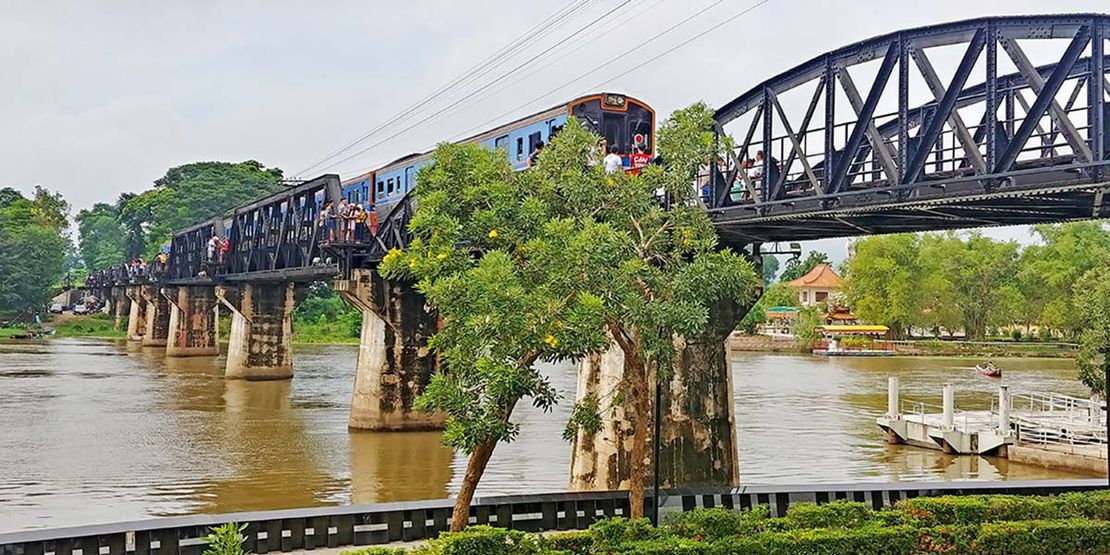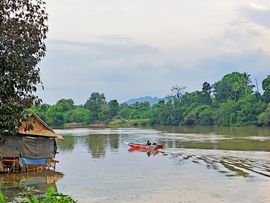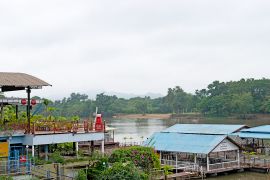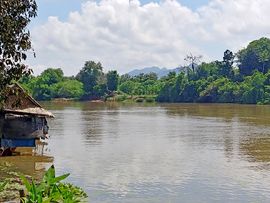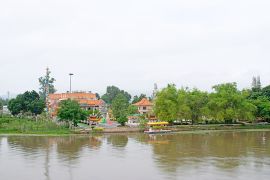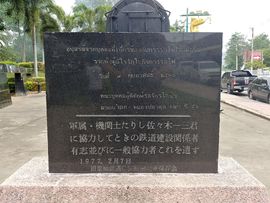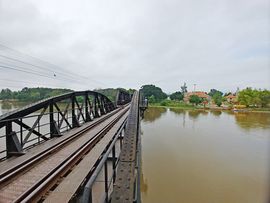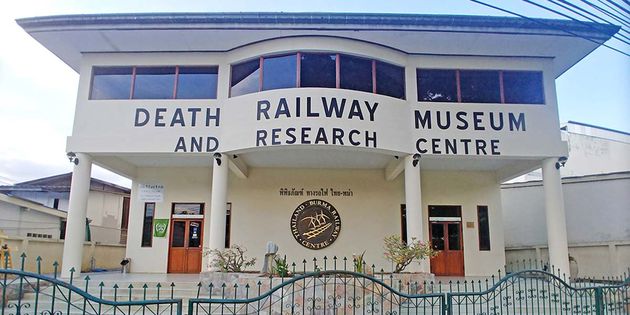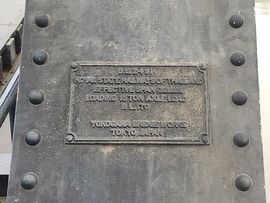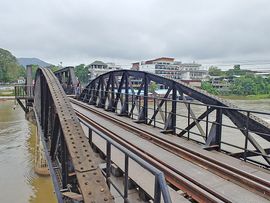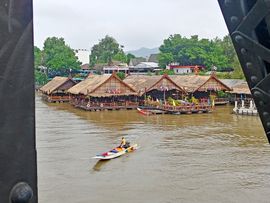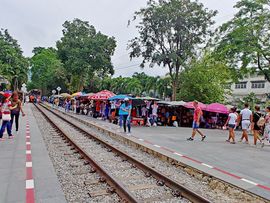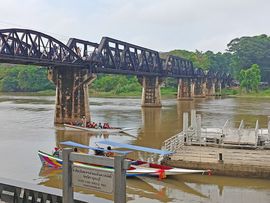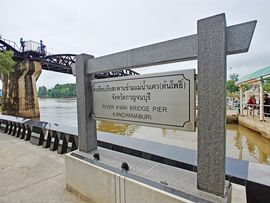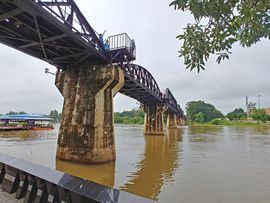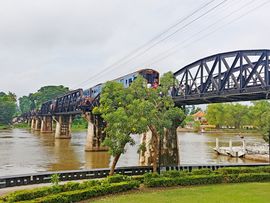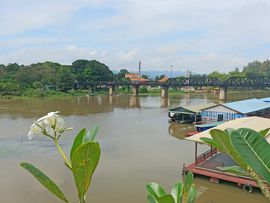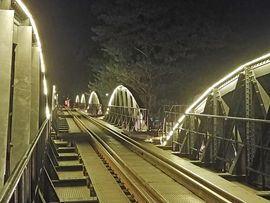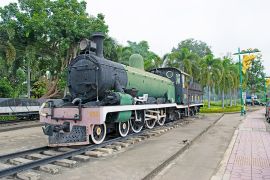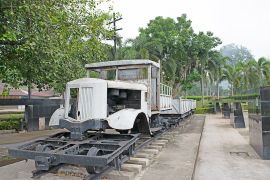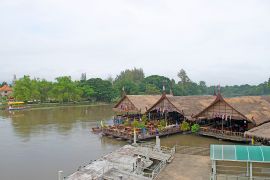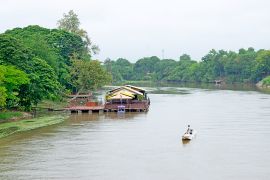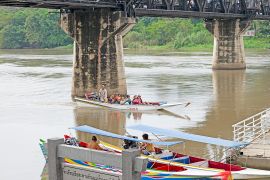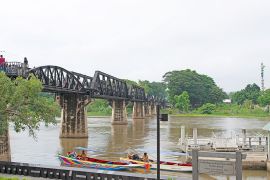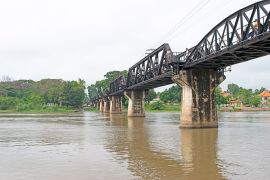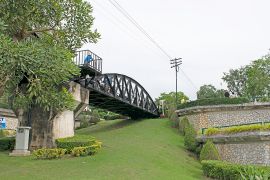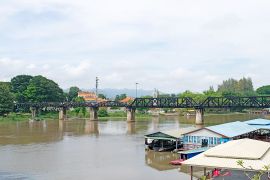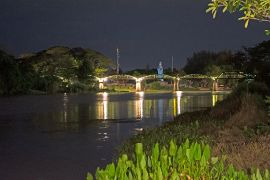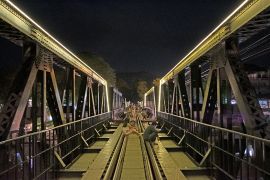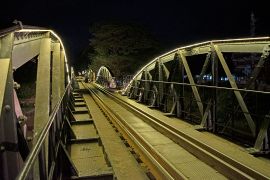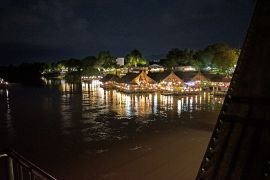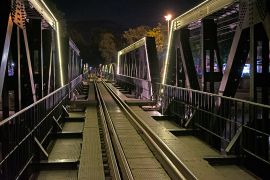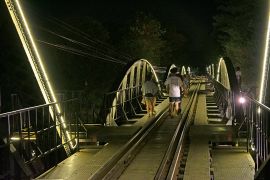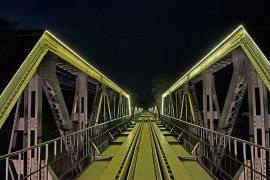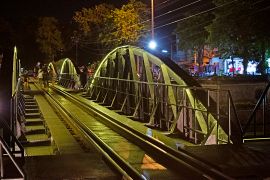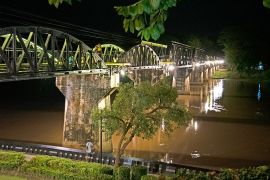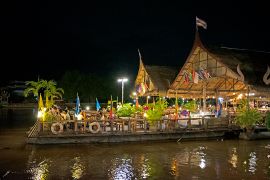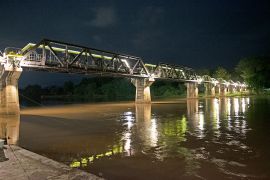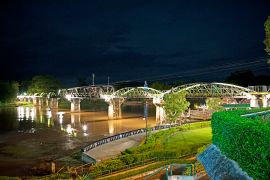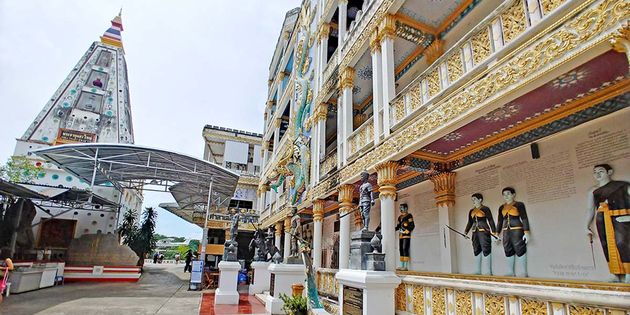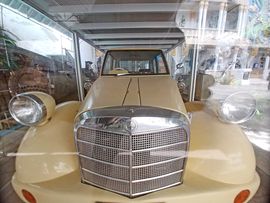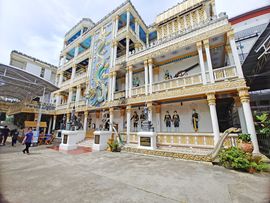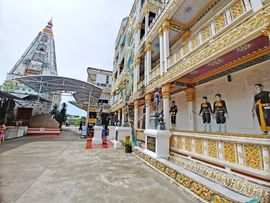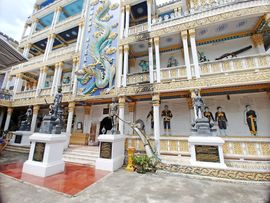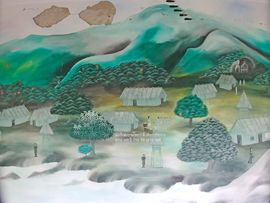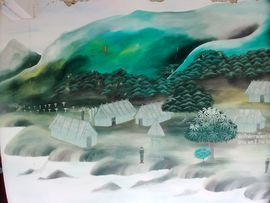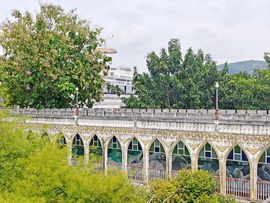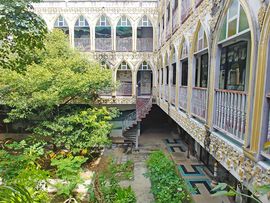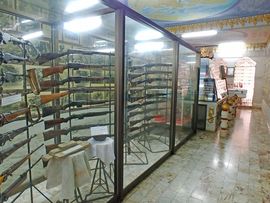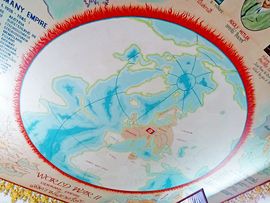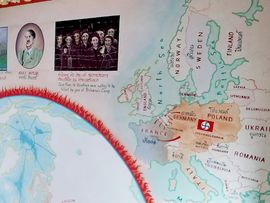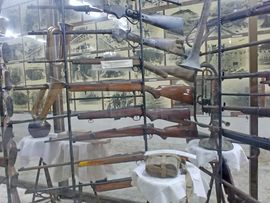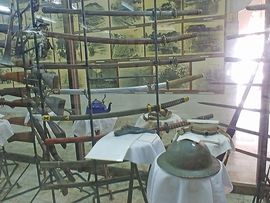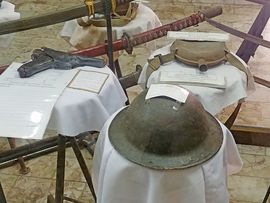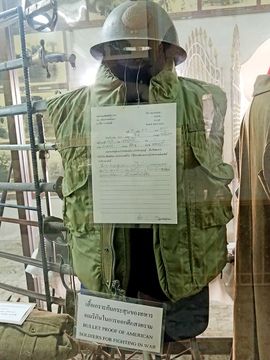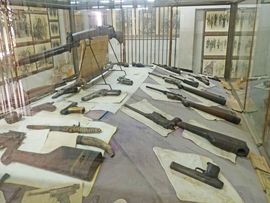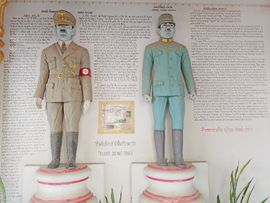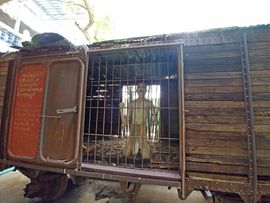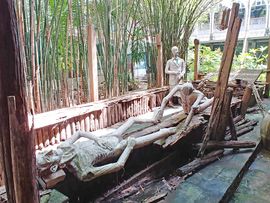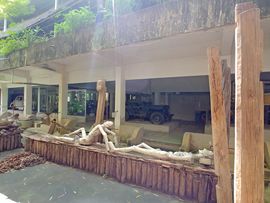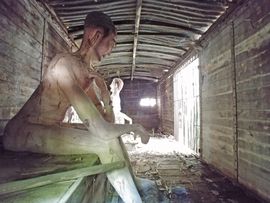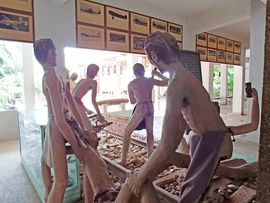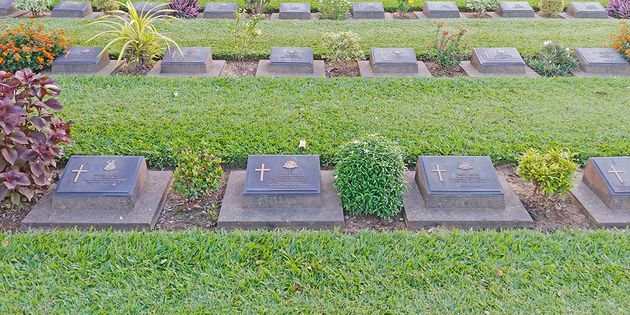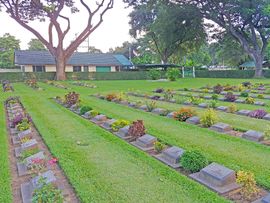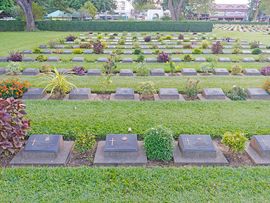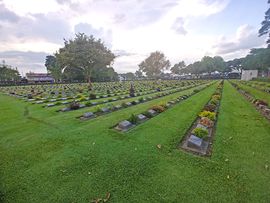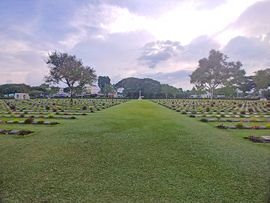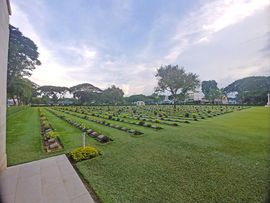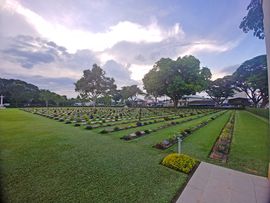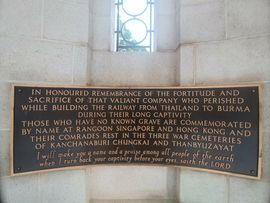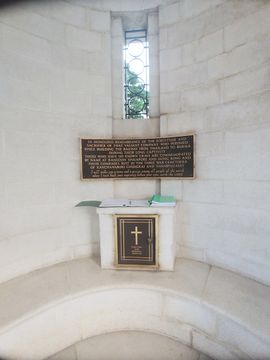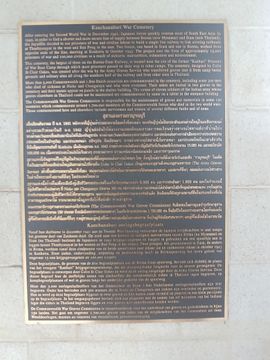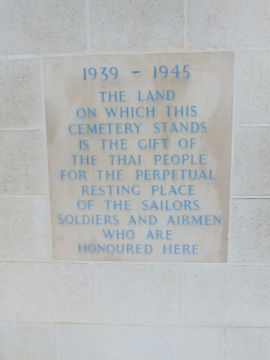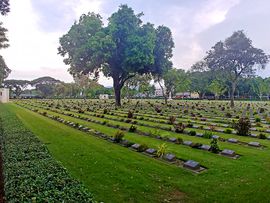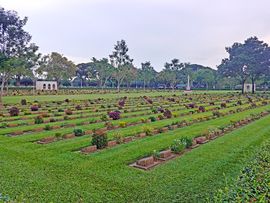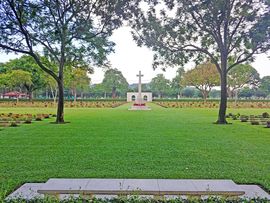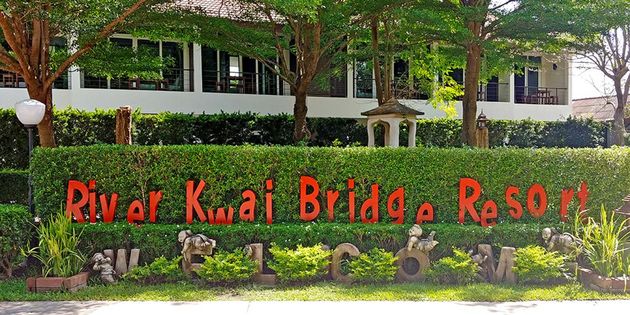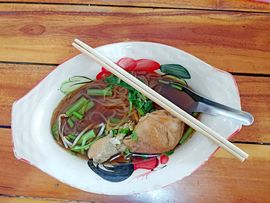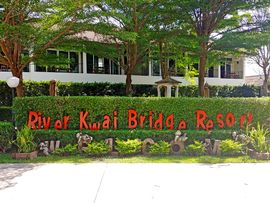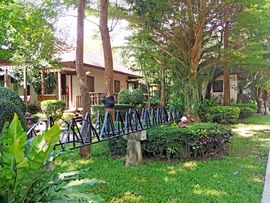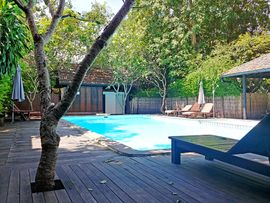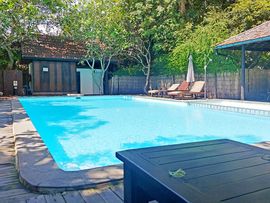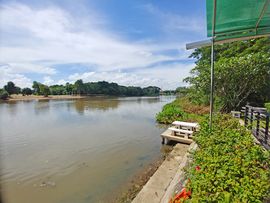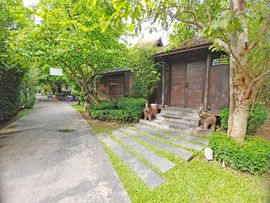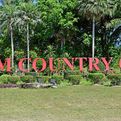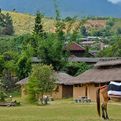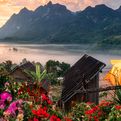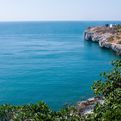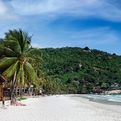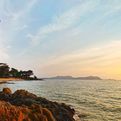Bridge Over the River Kwai: A Nostalgic Visit to the Death Railway in Kanchanaburi
When traveling through Kanchanaburi, there are a lot of famous landmarks to visit, but those built between WWII are not to be missed.
Kanchanaburi is located approximately 150 km northwest of Krung Thep Maha Nakhon (Bangkok) and has a population of nearly 52,000. The town today is scenic and pleasant and shows no visible evidence of the horrors that took place in the region between 1942 and 1945, apart from some landmarks that still stand today. The area was the main Japanese base for the failed construction of what is known today as the Burma Railway, which is also more succinctly known as the Death Railway (Bridge Over the River Kwai).
Join us on a humbling visit to the Bridge Over the River Kwai in Kanchanaburi to learn more about the WWII history of this place.
World War II History
Most people wrongly assume that World War II was mainly a war between Britain and a few Western nations against Adolf Hitler’s Nazis, with cameo appearances from Russia and the USA. The war did encompass the whole world, with Japan siding with the Nazis in East Asia after the infamous Pearl Harbor incident that propelled America into the war.
Kanchanaburi was an important place in the East during World War II. The Japanese forced local workers and allied prisoners to construct the final Bangkok leg of the railway between China and Burma. Over 100,000 Asian laborers and 16,000 allied troops turned prisoners of war died to build the railway. There are many tourist attractions and museums in the Kanchanaburi region to commemorate the tragedy. Here we can tell you a bit more about the places and their significance in the historical tale of Kanchanaburi and World War II.
Kanchanaburi was an essential place in the East during World War II. If you remember the hit movie, The Bridge Over the River Kwai, you already know some of the history of Thailand’s involvement with the Japanese forces in the Second World War.
Bridge Over The River Kwai
The construction of the Burma Railway also referred to as the Death Railway, and the Bridge Over the River Kwai during the Japanese occupation of Thailand in World War II has become a well-known story. However, it's important to note that the 1957 film "Bridge Over the River Kwai" took artistic liberties and dramatized events for storytelling, resulting in many parts of the movie being fictitious and not entirely reflective of historical accuracy.
The Japanese planned that the bridge, which was part of the larger plan to complete the final leg of the Burma Railway, would take 5-years to construct. But they did it in 16 months between 1942 and 1943 with a source of free labor that included local prisoners and Allied POWs. The inhumane practices that the Japanese pioneered when building the bridge are still widely condemned today and are not the ways to treat human beings, even amidst a war campaign. Work on the bridge took place 24 hours per day, seven days per week, resulting in the deaths of almost 120,000 people.
The deaths came from starvation, overworked and beaten, lack of sanitation, and so forth. The viciousness of the Korean and Japanese guards is legendary. They beat the ‘workers’ continuously and worked them hard from 12 to 18 hours per day in scorching hot temperatures over 30 degrees. The disease also played a massive part in the death toll, as malaria, dysentery, cholera, and beriberi were common.
As the Japanese needed the schedule for 24 hours per day, oil pot lamps and bamboo fires raged into the night, which led to the name “Hellfire Pass,” another site in the Kanchanaburi region. The bridge stands as a monument for the people who lost their lives in its construction, although the original bridge was blown up in the war. Also, today, the Bridge Over the River Kwai is a renovated version of the original bridge. Around the bridge, you will find lots of souvenir stalls and food vendors. It is still an exciting and historic place to visit.
The Burma Railway, commonly known as the Death Railway, spanned 415 kilometers and was built at the cost of over 120,000 lives lost.
JEATH War Museum
(JEATH Museum GPS: 13.992841, 99.526364)
As with any genocidal act, lessons should be learned from the experience, and we should never forget the deaths of innocent people, so they are not in vain. The JEATH War Museum was created to commemorate those who lost their lives during the construction of the Death Railway. Located within the Wat Chai Temple grounds in Kanchanaburi, the JEATH War Museum and its stories will bring a tear to your eye.
The museum shows what life was like for the forced, whipped, and beaten prisoners to construct the Death Railway. The word ‘JEATH’ is derived from the first letters of the nations of the people who built the bridge: Japan, England, America, Australia, Thailand, and Holland. The museum is home to a myriad of photos and illustrations that show the appalling conditions of the POWs during the construction of the railway. The images were donated mainly by those who survived the ordeal. You can only imagine how the horrific experience affected the remaining years of their lives.
One of the most ironic things about the location of the JEATH Museum is that it was formerly used as a detention center at the time of World War II to house the prisoners of war and has since turned into a museum, so we never forget the tragedies that happen at the hands of the Japanese and Koreans. Today, you can visit the museum between 8:30 am and 6 pm, pay a small admission fee of 30 THB, and learn more about the conditions of the prisoners. Every person should see something to remind themselves what happens when we let tyranny into the world.
Bridge Over the River Kwai is a once-in-a-lifetime must-visit historical monument. Visitors can also see the JEATH War Museum and cemetery to better understand this place's history. River Kwai bridge resort is also a nice place to visit and stay.
Kanchanaburi War Cemetery
(Kanchanaburi War Cemetery: 14.031335, 99.52536)
As you can see from the JEATH Museum, one of the main reasons to visit Kanchanaburi is to remember what happened so we can make the world a better place. One of the main tourist sites in the region is the Kanchanaburi War Cemetery. It is merely one of the saddest places you will ever visit. The cemetery, also known locally as Don-Rak War Cemetery, is located near the JEATH Museum and is the main cemetery for the victims of the Japanese in the construction of the Death Railway. There are almost 7,000 graves at the cemetery. Most people who died there, especially the Allied POWs, were extremely young, as you would expect with soldiers. It is not uncommon to see lines of gravestones where all the soldiers are under 20 years old.
Of the 7,000 people buried at the cemetery, 1,896 were Dutch soldiers. It is the most significant number of deaths outside the local Thai populace who died when constructing the railway. Aside from the Dutch, most other nationalities buried there are British and Australian. The bodies of the American soldiers were mostly repatriated and sent back home. It indeed is a humble affair to walk the grounds of the cemetery.
Visiting the Kanchanaburi War Cemetery is a humbling experience that can make one feel grateful for being alive. Situated across from the cemetery is the Beata Mundi Regina, a Dutch Roman Catholic church. The cemetery is now managed and supported by the Commonwealth War Graves Commission. It's an important site to visit as it reminds us of the darkest aspects of humanity that we must strive to prevent. Everyone should have the opportunity to visit the Kanchanaburi War Cemetery at least once.
River Kwai Bridge Resort
Aside from the JEATH Museums and the River Kwai Bridge, the River Kwai Bridge Resort is also an excellent place to stay and discover the city.
It's just a few steps from the JEATH Museum, so make sure you visit this place! Enjoy!
Map & More Information
Bridge Over the River Kwai in Kanchanaburi is one of Thailand's most important historical memorials and landmarks. Various events, folk performances, local goods markets, and entertainment venues are scheduled here.
|
Entry Fees |
Thai Burma Railway Center 100 Thai Baht for Adults | 50 Thai Baht for Children |
|
Business Hours |
Open 24 Hours | Monday – Sunday |
|
Business Address |
Crossing the Kwai Yai River, Tha Ma Kham, Mueang Kanchanaburi District, Chang Wat Kanchanaburi 71000 |
|
Contact Number |
+66 (0) 26 218 7019 |
|
Facebook Page |
|
|
|
|
|
|
|
|
GPS |
14.0417615, 99.5019687 |
The Bear Travelers
Hi! We're The Bear Travelers, passionate about exploring the world with friends, family, and loved ones. Join us on our spectacular journey as we dive into chosen destinations and share unforgettable experiences, capturing the essence of travel through engaging posts.
The Bear Travel | Experience like a Local
A fast-growing Thailand Travel Blog written by Expats and Thais since 2017. We will share our experiences and ideas from an insider point of view for you to create your own unique Thailand experience.
For the latest news and events about The Bear Travel, follow us on Facebook, Instagram, Twitter, Pinterest, or YouTube.
For any issues, concerns, or queries, don’t hesitate to CONTACT us.
More From The Bear Travel
Thailand Golf: The Old Course at Siam Country Club Pattaya
The Bear Travelers
Travel to Pai Guide: Everything You Need to Know
Professor Bear
Travel to Chiang Dao Guide: Everything You Need to Know
Professor Bear
Travel to Ko Si Chang Guide: Everything You Need to Know
Professor Bear
Travel to Koh Phangan Guide: Everything You Need to Know
Professor Bear
Ban Amphur: An Awesome Getaway in Chonburi
The Bear Travelers

